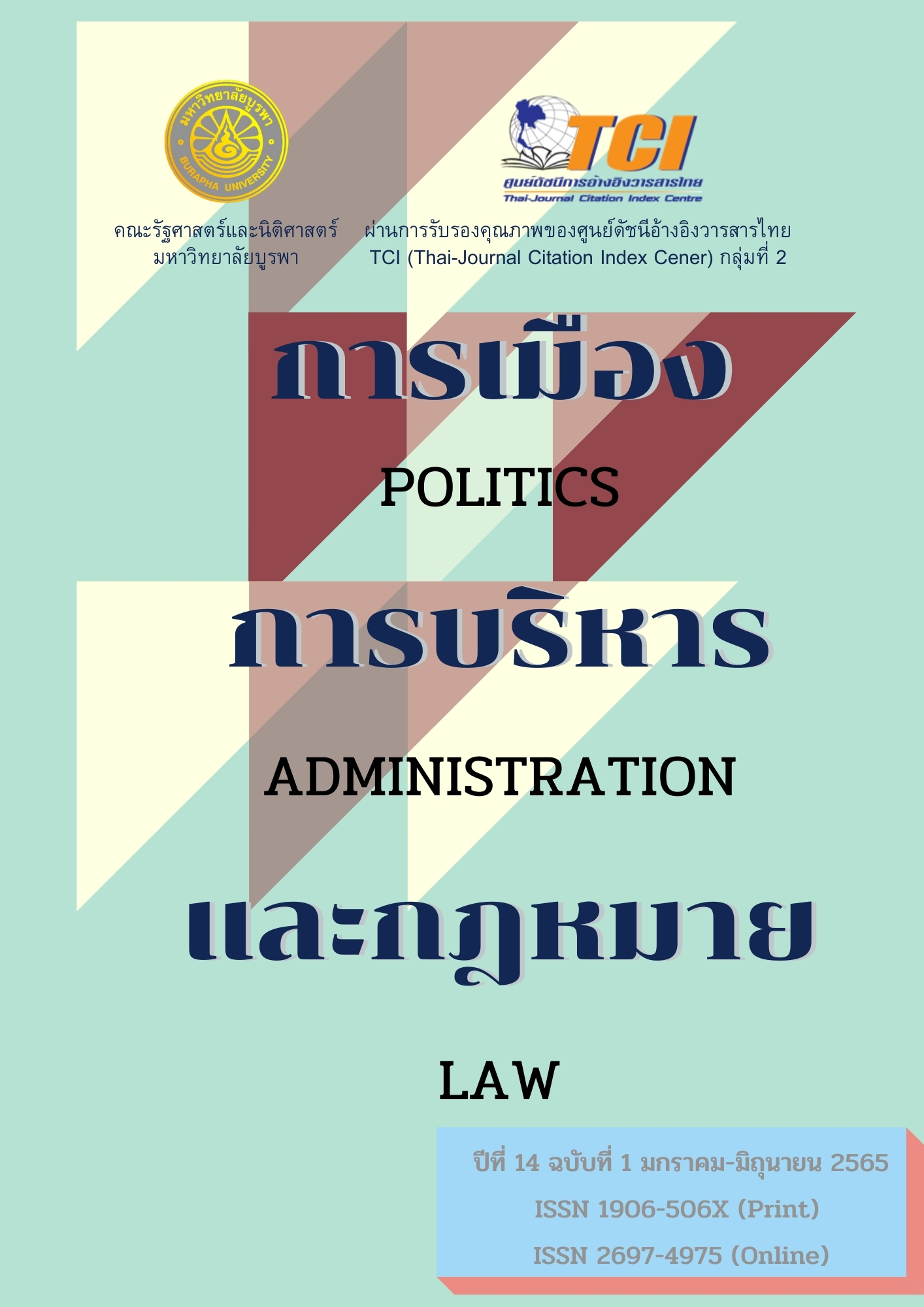รูปแบบการพัฒนาขีดสมรรนะหลักของแรงงาน เพื่อตอบสนองความต้องการของอุตสาหกรรมเป้าหมาย S-curve ในกลุ่มอุตสาหกรรมอิเล็กทรอนิกส์อัจฉริยะ (Smart electronics) ในเขตพัฒนาพิเศษภาคตะวันออก
คำสำคัญ:
ขีดสมรรถนะหลัก, อุตสาหกรรมเป้าหมาย S-curve, อิเล็กทรอนิกส์อัจฉริยะ, เขตพัฒนาพิเศษภาคตะวันออกบทคัดย่อ
บทคัดย่อ
การศึกษาวิจัยครั้ง เพื่อศึกษาขีดสมรรถนะหลักของแรงงานระดับประกาศนียบัตรวิชาชีพชั้นสูง (ปวส.) ที่อุตสาหกรรมเป้าหมาย S-curve ในกลุ่มอุตสาหกรรมอิเล็กทรอนิกส์อัจฉริยะ (Smart electronics) ในเขตพัฒนาพิเศษภาคตะวันออกต้องการ โดยใช้การวิจัยแบบเทคนิคเดลฟาย (Delphi technique) จำนวนทั้งหมด 3 รอบ กับกลุ่มผู้ให้ข้อมูลสำคัญที่คัดเลือกแบบเจาะจง (Purposive sampling) 3 กลุ่ม จำนวน 17 คน ได้แก่ ผู้ทรงคุณวุฒิที่มีประสบการณ์ในด้านการบริหารทรัพยากรบุคคล หรือการบริหารทรัพยากรมนุษย์ ในภาคอุตสาหกรรมอย่างน้อย 4 ปีขึ้นไป ผู้ทรงคุณวุฒิที่เป็นผู้บริหาร หรือกลุ่มผู้ใช้นักเรียนอาชีวศึกษา และผู้ทรงคุณวุฒิที่มีส่วนเกี่ยวข้องกับการกำหนดหลักสูตรการจัดการเรียนการสอนอาชีวศึกษา จากนั้นวิเคราะห์ข้อมูลด้วยการวิเคราะห์เนื้อหาและใช้สถิติค่ามัธยฐาน ฐานนิยม ค่าพิสัยระหว่างควอไทล์ ค่าความแตกต่างระหว่างค่ามัธยฐานและฐานนิยมตลอดจนทำการเปรียบเทียบความเห็นของผู้เชี่ยวชาญทั้ง 3 กลุ่ม ด้วยสถิติทดสอบมาช่วยในการตัดสินใจเลือกฉันทามติของผู้เชี่ยวชาญแล้วยืนยันผลการวิจัยด้วยการสนทนากลุ่มผู้ทรงคุณวุฒิ (Focus group) 3 กลุ่ม ประกอบด้วย ผู้ทรงคุณวุฒิที่มีประสบการณ์ในด้านการบริหารทรัพยากรบุคคล หรือการบริหารทรัพยากรมนุษย์ ในภาคอุตสาหกรรม ผู้ทรงคุณวุฒิที่เป็นกลุ่มผู้ใช้นักเรียนอาชีวศึกษา และผู้ทรงคุณวุฒิที่เป็นนักวิชาการที่มีความรู้ ความเชี่ยวชาญ เกี่ยวกับอาชีวศึกษา จำนวน 9 คน
ผลการวิจัยพบว่า ขีดสมรรถนะหลักของแรงงานระดับประกาศนียบัตรวิชาชีพชั้นสูง (ปวส.) ที่อุตสาหกรรมเป้าหมาย S-curve ในกลุ่มอุตสาหกรรมอิเล็กทรอนิกส์อัจฉริยะ (Smart electronics) ในเขตพัฒนาพิเศษภาคตะวันออกต้องการ ขีดสมรถนะหลักด้านความรู้ ประกอบด้วย 8 องค์ประกอบ ขีดสมรถนะหลักด้านทักษะ ประกอบด้วย 10 องค์ประกอบ และขีดสมรรถนะหลักด้านคุณลักษณะ ประกอบด้วย 9 องค์ประกอบ
เอกสารอ้างอิง
กระทรวงแรงงาน. (2560). รายงานการศึกษาวิเคราะห์ฐานข้อมูลแรงงานและประมาณการความ
ต้องการแรงงาน. กรุงเทพฯ: บริษัท เท็กซ์ แอนด์ เจอร์นัล พับลิเคชั่น จำกัด.
กีรติ ยศยิ่งยง. (2549). ขีดความสามารถ: Competency based approach. กรุงเทพฯ: มิสเตอร์ก๊อปปี้.
เกรียงไกรยศ พันธุ์ไทย. (2554). กลยุทธ์การพัฒนาทรัพยากรมนุษย์เชิงบูรณาการ: กุญแจสู่
ความสำเร็จความเป็นเลิศ. วารสารพัฒนาบริหารศาสตร์, 51(3). 239-257.
เกียรติอนันต์ ล้วนแก้ว. (2561). การศึกษาแนวโน้มความต้องการกำลังคนโดยยึดพื้นที่เป็นฐาน.
สำนักงานเลขาธิการสภาการศึกษา กระทรวงศึกษาธิการ.
ณรงค์วิทย์ แสนทอง. (2547). มารู้จัก Competency กันเถอะ. กรุงเทพฯ: เอช อาร์ เซ็นเตอร์.
ดนัย เทียนพุฒ. (2542). การจัดการ ทรัพยากรบุคคล: ภารกิจที่ท้าทาย. กรุงเทพฯ: สำนักพิมพ์บุ๊ค
แบงค์.
ธาดา ราชกิจ. (2562). การพัฒนาทรัพยากรมนุษย์ (Human resource development: HRD). เข้าถึงได้
จาก https://th.hrnote.asia/orgdevelopment/190423-human-resource-development.
บุญสืบ โพธิ์ศรี และธีรวัฒน์ จันทึก (2559). การบริหารหลักสูตรเพื่อสร้างคุณลักษณะแรงงานฝีมือ
อาชีพในระดับอาชีวศึกษา. Veridian E-Journal, Silpakorn University, 9(1), มกราคม - เมษายน. 1268-1287.
แผนพัฒนาเศรษฐกิจและสังคมแห่งชาติ ฉบับที่ 12. (2560). สรุปสาระสำคัญ แผนพัฒนาเศรษฐกิจ
และสังคมแห่งชาติ ฉบับที่ 12 (พ.ศ. 2560 -2564). กรุงเทพฯ: สำนักงานคณะกรรมการ
พัฒนาการเศรษฐกิจและสังคมแห่งชาติ สำนักนายกรัฐมนตรี.
พกานต์ ตันติกรพรรณ และศศิวิมล สุขบท (2559). คุณสมบัติของแรงงานที่สำเร็จการศึกษาจาก
สถานศึกษาอาชีวะเอกชนเพื่อตอบสนองความต้องการของภาคอุตสาหกรรมเขตพื้นที่ภาคใต้ ประเทศไทย. ใน การประชุมหาดใหญ่วิชาการระดับชาติ และนานาชาติ ครั้งที่ 7. สงขลา: มหาวิทยาลัยหาดใหญ่.
พิทักษ์ วราฤทธิชัย, พรชัย เทพปัญญา และนรินทร์ สังข์รักษา. (2561). สมรรถนะทรัพยากรมนุษย์
ด้านอุตสาหกรรมไฟเบอร์คอมโพสิทที่พึงประสงค์ของประเทศไทย. Veridian E-Journal,
Silpakorn University (Humanities, Social Science and Arts), 11(3), 1002-1022.
พัชรา สร้อยสกุล (2559). การพัฒนาทักษะแห่งศษตวรรษที่ 21 สำหรับนักเรียนอาชีวศึกษาเอกชน
ในเขตพัฒนาอุตสาหกรรมชายฝั่งทะเลตะวันออก. ดุษฎีนิพนธ์การศึกษาดุษฎีบัณฑิต,
สาขาวิชาการบริหารการศึกษา, คณะศึกษาศาสตร์, มหาวิทยาลัยบูรพา.
วรรณา ยงพิศาลภพ. (2564). อุตสาหกรรมอิเล็กทรอนิกส์. แนวโน้มธุรกิจ/อุตสาหกรรม ปี 2564-66.
วิจัยกรุงศรี. ธนาคารกรุงศรีอยุธยา.
สถาบันดำรงราชานุภาพ. (2553). Competency: เครื่องมือในการบริหารแบบมุ่งผลสัมฤทธิ์.
กรุงเทพฯ: สำนักงานปลัดกระทรวงมหาดไทย.
สํานักงานเลขาธิการสภาการศึกษา. (2554). ยุทธศาสตร์การผลิตและพัฒนา กําลังคนของประเทศ
ในช่วงการปฏิรูปการศึกษา ในทศวรรษที่สอง พ.ศ. 2552-2561. กรุงเทพฯ:
พริกหวานกราฟฟิค.
อาภรณ์ ภู่วิทยพันธุ์. (2559). โปรแกรมพัฒนาสมรรถนะด้านบริหารจัดการสำหรับผู้นำ. กรุงเทพฯ:
เอช อาร์ เซนเตอร์.
Bogner, A. & Menz, M. (2009). The theory-generating expert interview: Epistemological
interest, forms of knowledge, interaction. London: Palgrave Macmillan.
Boyatzis, R.E. (1982). The competent manager: A model for effective performance. New York:
Wiley.
Brockhoff, K. (1975). The performance of forecasting groups in computer dialogue and face-to-
face discussion. In Turoff M. and Linstone H.A. (Eds.), The Delphi method:
Techniques and Applications. London: Addison-Wesley.
Chi-Tung Chen. (2010). Exploring an industry-based basic technological competence indicator
system of electrical technology for students at technological institute. World
transactions on engineering and technology education, 8(4), 542-551.
Flanders, F.B. (1998). Determining curriculum content for nursery/landscape course work. In
vocational agriculture for the 21st century: A futures study utilizing the Delphi
technique. Doctoral dissertation. University of Georgia.
Harrison, R., and Kessels, J. (2004). Human resource development in a knowledge economy: An
organization view. NY: PALGRAVE MACMILLAN.
Hay Group. (2003). Using competencies to identify high performers: An overview of the basics.
Philadelphia: Hay Group, Inc.
Okoli, C. & Pawlowski. S.D. (2004). The Delphi method as a research tool: An example, design
considerations and applications. Information & Management.
Spencer, L.M. and Spencer, S.M. (1993). Competence at work. New York: Wiley.
Weiberger, L. A. (1998). Commonly held theories of human resource development. Human
resource development international, 1(1), 75-94.
Yorks, L. (2005). Strategic human resource development. South Western: Thomson Corporation.
เผยแพร่แล้ว
ฉบับ
ประเภทบทความ
สัญญาอนุญาต

อนุญาตภายใต้เงื่อนไข Creative Commons Attribution-NonCommercial-NoDerivatives 4.0 International License.






